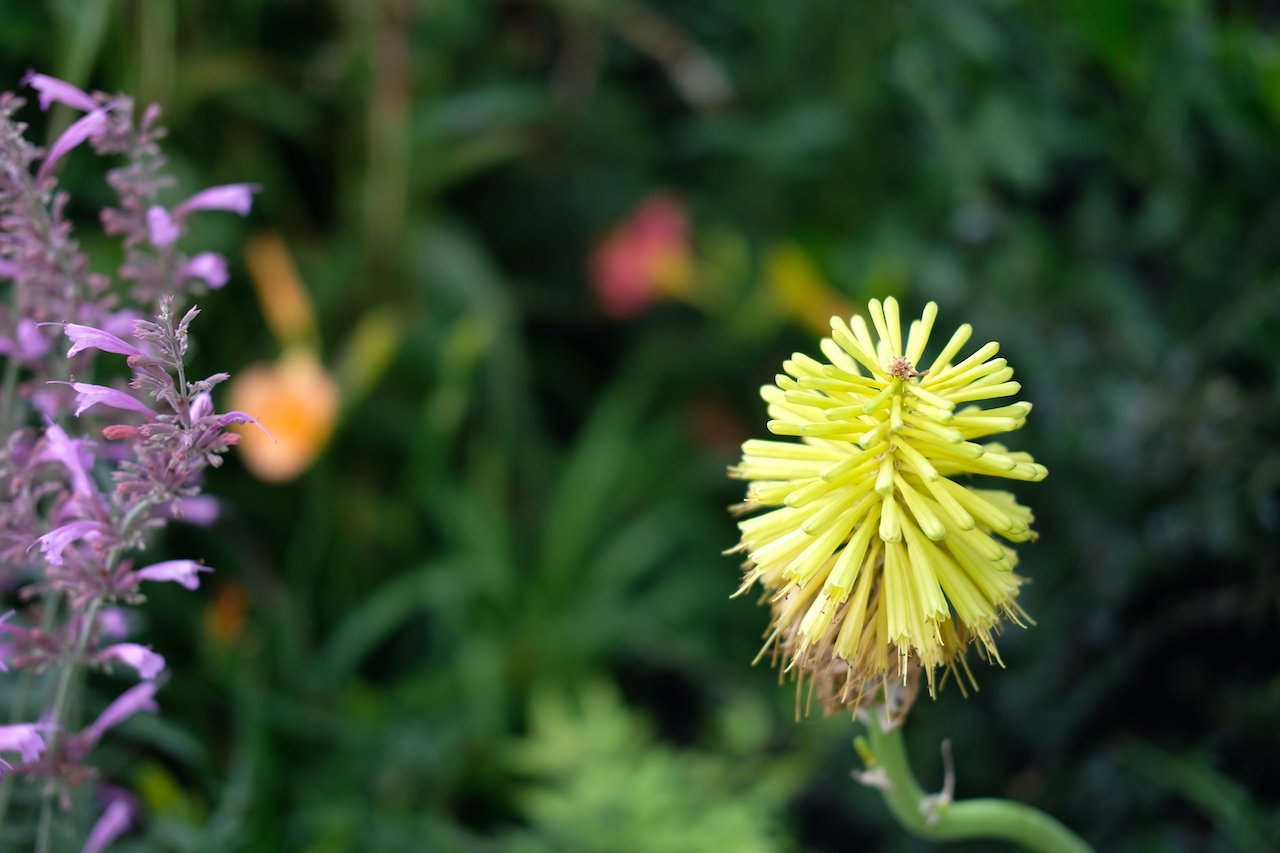MIFGS edit: African-Australian
As a South African-born Australian, I was thrilled to see a few gardens at this year’s Melbourne International Flower and Garden Show celebrating the connections between our diverse plants and cultures which were once joined as Gondwana.
First up is Morayo Adeyemi’s Alafia Australis Healing Garden, a merging of West African and Australian cultures “promoting the culinary, medicinal and aesthetic traditions of both regions”.
Alafia australis: “It is well down under” – Yoruba & Latin
I appreciated Morayo’s focus on rainforest and riparian species; reminding us that not all of Africa or Australasia are arid plains! The beautiful curved rammed earth wall creates a wonderful sense of welcoming enclosure where I could imagine community thriving over shared traditions and meals.
Next is Matt York’s In Ratio with Africa, which explores the intricate connections between African and Australian garden design. This garden skilfully showed how we can learn from other countries and cultures in choosing resilient plants.
Matt’s use of colour, rounded shapes, and texture here created an overall sense of calm whilst still being interesting to explore.
It was also lovely to spot two beloved southern African plants featured in other gardens - Pelargonium sidoides and Kniphofia cv.
I first encountered P. sidoides on my first visit to Burnley, my alma mater. There, it grows in a rockery putting on a brilliant display in summer and into autumn. I fell in love with the beautiful contrast between grey-green leaves and rich burgundy flowers which start out a paler shade of cerise; not a colour combination often seen in plants. As an RHS Award of Garden Merit, it’s a proven winnrer. In South Africa, the root is used to treat respiratory conditions.
The Kniphofia genus has around 70 different species. Commonly known as red hot pokers, their distinctive torch shapes create little exclamation points popping up from a garden bed of lower-growing species.
Both perform best in full sun and free-draining soils with some fertility, with some afternoon shade in hot climates. They are drought-tolerant once established but will benefit from supplementary watering in extended dry periods.
















